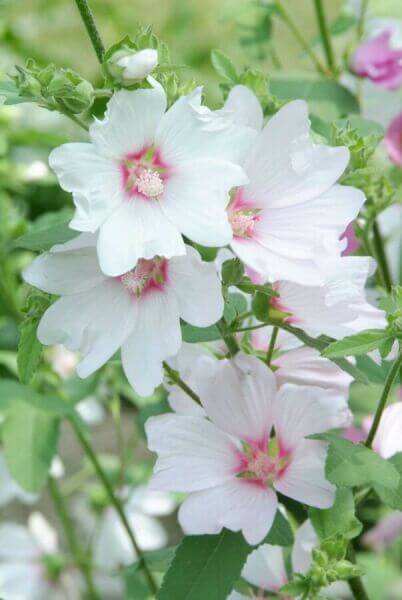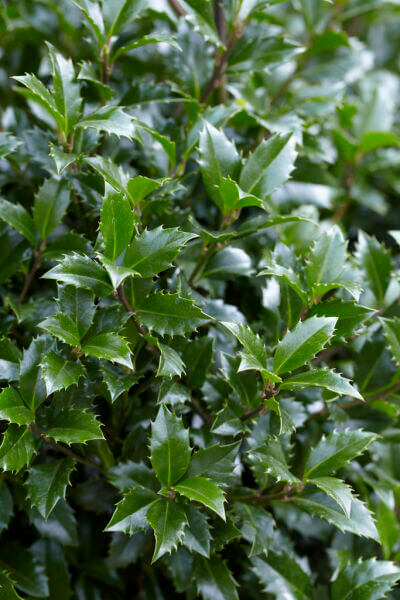Hedge Plants For Heat Tolerance
Hedge Plants For Heat Tolerance
Blog Article
Best Hedging Plants For Narrow Spaces
Enhance your garden's appeal with lush hedge varieties such as Yew (Taxus), Thuja, Laurel, Photinia, and Bamboo, commemorated for their structural integrity and ecological benefits.
Yew and Thuja offer evergreen protection and winter strength, while Laurel offers fast development and broad, fragrant leaves.
Photinia adds seasonal beauty with its vibrant red foliage, and Bamboo provides a low-maintenance, serene ambiance.
These hedges enhance air quality, lower noise, and produce tranquil, personal spaces.
Appropriate planting, spacing, and upkeep make sure energetic development and eco-friendly harmony.
Explore how these lavish ranges can elevate your garden's charm and wellness.
Secret Takeaways
Transform Your Garden With Lush Hedge Varieties
- Select Yew for its dense, evergreen development and unparalleled longevity.
- Select Laurel for its fast development and broad leaves, making sure quick privacy.
- Select Photinia for its dynamic seasonal foliage, which turns a striking dark red.
- Make use of Bamboo for a low-maintenance, winter-hardy hedge with visual appeal.
- Space plants 2-3 per meter and prune routinely for optimum development and health.
Popular Hedge Plants
When changing a garden with lavish hedge ranges, it's vital to consider popular hedge plants such as Yew, Thuja, Laurel, and Photinia due to their unique characteristics and advantages.
Yew (Taxus) is extremely respected for its durability and thick, green development, making it a prime option for sustaining landscapes.
Thuja is kept in mind for its evergreen foliage and robust winter season strength.
Photinia includes seasonal vibrancy with red leaves that darken gradually, producing dynamic visual appeal.
Laurel uses quick development and fragrant, broad leaves, ideal for quick personal privacy.
Additionally, Bamboo is an excellent option for ambiance, providing a low-maintenance, winter-hardy alternative that boosts the garden's visual with its sophisticated, swaying walking sticks.
These selections cater to a variety of horticultural requirements and choices.
Benefits of Garden Hedges
Garden hedges offer a multitude of advantages, making them an important addition to any landscape. These natural barriers are affordable to implement and supply substantial wind defense, improving air circulation and contributing to noise decrease. The thick foliage of hedges like Thuja and Beech guarantees privacy by blocking exposure, producing a serene and remote environment.
Hedges also play a crucial role in microclimate regulation, providing a stable environment that promotes plant growth and minimizes temperature level changes. Their intricate leaf structures filter toxins, improving air quality and adding to a healthier garden environment.
Additionally, hedges master noise decrease, soaking up and deflecting sound waves to lower ambient sound levels. This dual performance of providing both acoustic and visual privacy improves the total tranquility and visual appeal of any garden.
Planting and Upkeep Tips
For a successful hedge, meticulous preparation of the planting area is vital. Ensure the soil has appropriate pH and drain to support strong root advancement.
Area the plants properly for the picked species. Water the hedge often during its preliminary growth stage, changing as needed with seasonal changes.
Execute a organized pest control and disease prevention method, utilizing natural or chemical treatments when needed. Frequently check for aphids, mites, and fungal infections.
Apply mulch to retain moisture and suppress weeds. Seasonal pruning promotes thick development and air blood circulation, necessary for plant health.
Following these standards will help you cultivate a vibrant, well-maintained hedge that improves the beauty of your garden.
Spacing and Trimming Guidelines
Spacing and Trimming Guidelines
Appropriate spacing and trimming are essential for cultivating healthy, aesthetically appealing hedges. Appropriate spacing makes sure each plant gets enough nutrients, light, and air flow.
Follow these standards for ideal hedge maintenance:
- Spacing: Position hedge plants 2-3 plants per meter to encourage robust growth.
- Pruning Techniques: Routine pruning is vital for keeping desired hedge height and shape. Cut new development in summer season and cut down older wood during winter.
- Seasonal Care: Adjust trimming methods and schedules according to seasonal requirements to guarantee plant health.
- Hedge Height: Regularly display and cut to maintain the wanted hedge height and achieve consistent aesthetics.
Sticking to these steps will guarantee your hedge grows, boosting both the appeal and performance of your garden.
Selecting the Right Hedge
Selecting the Right Hedge
Selecting the proper hedge includes assessing factors such as fully grown height, foliage density, and environmental resilience. Effective hedge plant selection requires comprehending each species' development characteristics and site-specific flexibility.
For example, Yew (Taxus) offers exceptional durability and dense development, while Thuja is noteworthy for its winter resilience. Furthermore, considering maintenance requirements is essential; fast-growing species like Laurel or Privet demand regular cutting, whereas low-maintenance alternatives like Bamboo or Ivy might be preferable for those seeking minimal maintenance.
Ecological elements such as soil type, light accessibility, and wetness conditions ought to also direct the selection process. This careful method ensures the selected hedges will thrive, offering both aesthetic and practical advantages to the garden landscape.
Delivery and Planting Suggestions
To guarantee your hedge plants prosper, they ought to be delivered by specialized carriers and planted quickly upon arrival.
Follow these necessary steps for successful planting:
- Soil Preparation: Improve the soil with organic matter to improve drainage and nutrient material.
- Planting Depth: Produce a trench two times the width and equal to the depth of the root ball.
- Watering Strategies: Water completely after planting, keeping the soil consistently moist but not filled.
- Mulching: Use a layer of mulch to retain moisture and suppress weeds.
Client Support and Service
Provided the vital function of timely assistance in horticultural pursuits, our customer support team is offered 6 days a week through telephone, e-mail, and social networks to use skilled advice and swiftly deal with any concerns. Their commitment to quick response times makes sure client fulfillment by fixing questions connected to plant health, optimum planting approaches, and upkeep schedules.

-----------------
Telephone
Six days a week
Within 24 hours
This extensive assistance system, enhanced by an outstanding 9.3/ 10 consumer rating, highlights our commitment to improving the gardening experience for every single customer.
Regularly Asked Concerns
The Length Of Time Does It Consider Hedge Plants to Develop?
Hedge plants generally require one to three years to become fully developed, with the exact period differing by types and growing conditions.
Efficient care during this vital period is vital for robust growth. Consistent watering, vigilant weed control, and appropriate fertilizer application are pivotal in promoting strong root advancement.
For instance, fast-growing types like Laurel might establish faster, while slower-growing varieties such as Yew may take longer. Thorough upkeep accelerates the establishment procedure, leading to dense and healthy hedges.
What Are the Best Hedge Plants for Personal Privacy?
The concern of the very best hedge plants for privacy involves assessing evergreen and deciduous choices.
Evergreen hedges like Thuja, Laurel, and Cypress provide year-round coverage, ensuring constant privacy.
On the other hand, deciduous hedges such as Beech use seasonal privacy, shedding leaves in colder months.
Secret upkeep suggestions for privacy hedges consist of regular cutting, fertilizing in spring, and correct spacing-- generally 2 to 3 plants per meter.
Additionally, constant watering and persistent weed removal are vital for promoting healthy, dense development.
Can Hedge Plants Draw In Wildlife to My Garden?
Yes, hedge plants can attract wildlife to your garden by supplying vital benefits like shelter, food, and nesting websites, thus boosting local biodiversity. For example, yew, holly, and laurel are excellent for bring in birds, while ivy supports a variety of pests.
However, it is very important to keep in mind that there are some disadvantages, such as increased upkeep to manage insects and routine upkeep. Thoroughly selecting and preserving hedge ranges can help stabilize these advantages and disadvantages, ultimately cultivating a vibrant and sustainable environment in your garden.
Are There Any Blooming Hedge Plants Available?
Yes, there are flowering hedge plants readily available that can improve the appeal of your garden.
For instance, Elaeagnus, also called Olive Willow, produces aromatic white flowers in the fall, adding a touch of beauty.
Photinia, another popular option, showcases vibrant red leaves that develop into an abundant green, developing a dynamic visual effect throughout the seasons.
To guarantee these plants prosper, it's important to practice proper pruning strategies and seasonal maintenance, such as trimming new growth in the summertime and cutting down in the winter season.
These steps will assist maintain the health and aesthetic appeal of your flowering hedges.
How Do I Prevent Insects in My Hedge Plants?
To prevent insects in hedge plants, utilize natural insect control approaches and keep appropriate hedge care. Introduce helpful pests like ladybugs, which prey on harmful pests, to create a balanced ecosystem.
Frequently check your hedges for indications of Browse this site problem and without delay remove any affected parts to prevent the spread. Make sure the health of your hedges by using well balanced fertilizers and offering sufficient water.
Use mulching to retain soil moisture and correct spacing to lower plant tension and promote robust development. These practices collectively help in minimizing bug problems and preserving a healthy hedge.
Conclusion
In essence, choosing the right hedge ranges such as Yew, Thuja, and Laurel can transform any garden into a peaceful sanctuary. These plants offer year-round greenery, enhance visual appeal, and offer practical advantages like noise reduction and wind defense.
Appropriate planting techniques, precise spacing, consistent watering, and seasonal cutting are crucial for ideal growth.
Reliable shipment services and professional customer assistance ensure a smooth experience from purchase to planting, making it simpler than ever to raise your outdoor area.
Garden hedges provide a wide variety of advantages, making them a valuable addition to any landscape. These natural barriers are cost-efficient to execute and provide substantial wind protection, boosting air circulation and contributing to sound reduction. The dense foliage of hedges like Thuja and Beech ensures privacy by blocking visibility, developing a secluded and peaceful environment.

Pruning Methods: Regular pruning is important for maintaining wanted hedge height and shape. Trim new development in summertime and cut back older wood during winter season.
Report this page